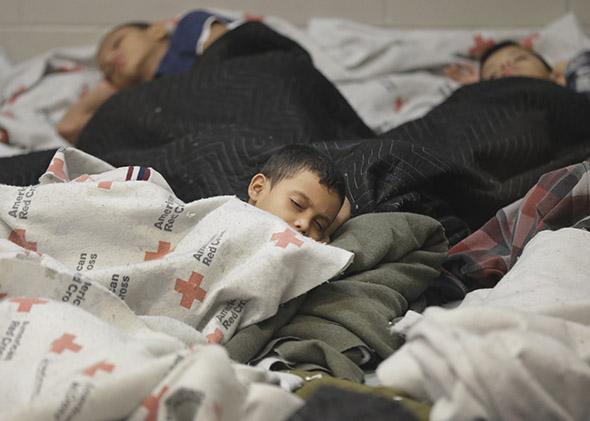Diseases that are endemic to other countries are not always the same ones that we face in the United States. This is a medical observation, not a political one, and it is the reason immigrants who enter this country legally face rigorous screenings in advance of entry for sexually transmitted diseases, active tuberculosis, new strains of influenza, leprosy, cholera, and plague.
The U.S. Department of Health and Human Services and the Centers for Disease Control and Prevention require that all legal immigrants receive a medical exam. Proof of vaccination is also mandatory for measles, mumps, rubella, polio, tetanus, diphtheria, pertussis, haemophilus strains, hepatitis A and B, rotavirus, meningococcus, chicken pox, pneumonia, and seasonal flu.
None of these rigorous screenings can be done in advance of entry on people who enter this country illegally and undetected. And once people are detained, the screenings they receive are not nearly as rigorous or effective at controlling the spread of disease. This is the reason that we have a potential public health crisis along our southern border.
As many as 50,000 children, mostly from Central American countries, are now being housed in cramped makeshift detention centers by the U.S. government. Unfortunately, they are not being detained for the purpose of identifying illness, with Immigration and Customs Enforcement relying on self-report of symptoms, and many have already been sent to other states, where disease can spread.
According to Kenneth J. Wolfe, deputy director of public affairs for the Administration for Children and Families at Health and Human Services, children who enter the HHS unaccompanied alien children program are given a well-child exam and vaccinations against communicable diseases. They are also screened for TB and mental health problems, and placed in quarantine or special facilities as needed.
But health care workers at these cramped, overwhelmed centers have not been speaking to the news media, so it is difficult to know exactly which diseases have appeared and how many cases there are. Large outbreaks have been reported of scabies, a highly contagious, intensely itchy rash spread by tiny insects called mites.
A senior spokesman for CDC told me that HHS is taking the lead in providing medical services for these centers in southwest Texas and Arizona. When a case of H1N1 swine flu was diagnosed in late June, 2,000 flu vaccines were flown in. Since it takes two to three weeks for a vaccine to confer protection, more cases of flu are likely within the centers. It is also possible that the disease will spread to the local community and beyond.
Drug-resistant tuberculosis also appears to have spread, with several counties in southern Texas reporting twice the usual average number of cases. TB is a disease that needs to be carefully monitored and screened for, a prospect that is not possible under the current circumstances.
Dengue fever, a potentially deadly mosquito-borne disease that causes fatigue, pain in the bones and muscles, and fever, and infects close to 100 million people worldwide every year, has been detected this year in southern Texas for the first time since 2005. Illegal immigrants, possibly from Mexico, are a likely source. If infected mosquitoes begin to breed here, we could see more outbreaks.
There have been reports of measles and chicken pox at the centers, both of which are highly contagious and can spread to other children who aren’t vaccinated.
A physician working to take care of any infected child must treat that child with compassion and appropriate medication. He or she should never provide substandard care or weigh in on the political issue of whether a child should be in this country or how he or she got here.
At the same time, immigrants in poor health or suffering from a communicable illness who enter this country illegally create public health risks. This is why we have such an extensive system for screening the health of legal immigrants in the first place before they are allowed in. It is not a political statement to say that the effectiveness of these screenings is being undermined if hundreds of thousands pass through our borders without them. Whatever the partisan arguments about how this crisis erupted, the most urgent question right now is how to prevent a public health crisis.
HHS told me that the CDC has now activated its Emergency Operations Center to Level III, which means it is on 24-hour alert to better coordinate and track their programs in support of what HHS is calling “the urgent humanitarian situation of unaccompanied children along the southwest border.” But calling it a crisis and working to contain it are two different things. It is clear that the CDC needs to be more involved immediately to help identify, treat, and contain emerging diseases. Putting a cone of secrecy around the health concerns of 50,000 children helps neither those who are sick nor those who are placed at risk.
